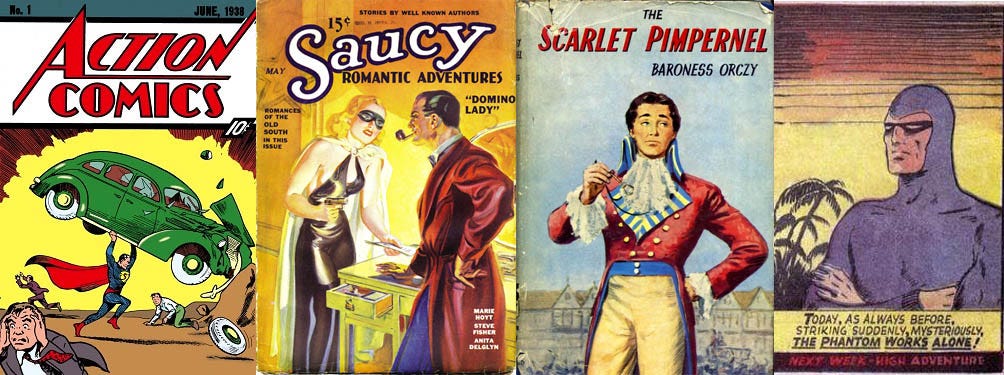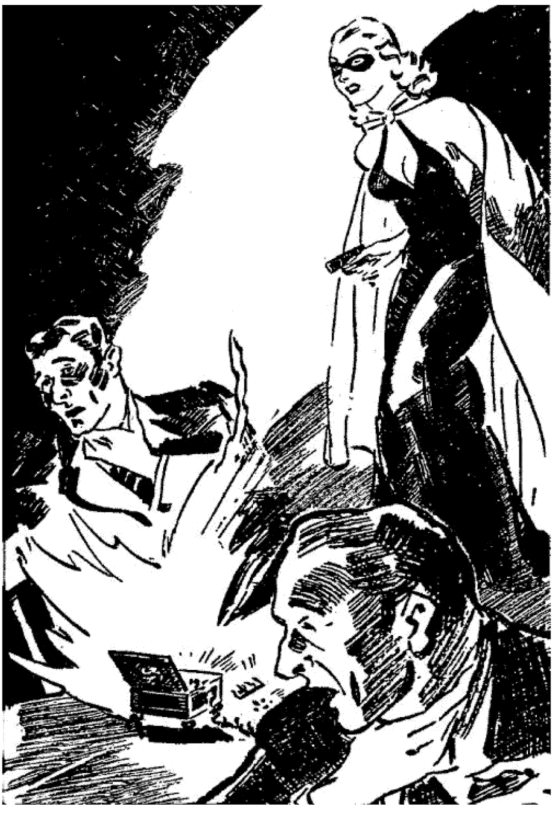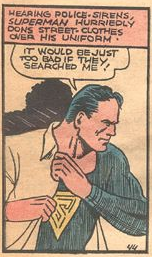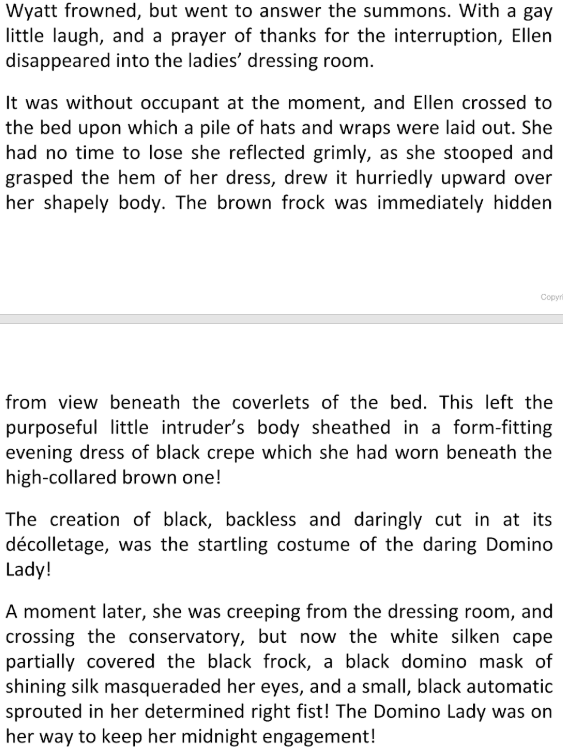Who Invented Superheroes—A Woman, Two Jews, or a “Saucy” Pulp Writer?

There’s a popular argument that the Scarlet Pimpernel was the first superhero, and since his creator, Baroness Emma Orczy, was a woman, that means women invented superheroes in 1905. In 2018, Bob Chipman promoted the idea with this tweet:
I understand the desire to claim a woman created superheroes — I happily argue that Mary Shelley invented science fiction when she wrote Frankenstein— but Chipman made a mistake that’s especially embarrassingly for a movie critic: he forgot that the Scarlet Pimpernel never had a distinctive costume.
To decide who invented superheroes, you have to decide what a superhero is. I like this take:
“…like the pulps before them, comic books and comic strips contained all the elements of the superhero — the powers, the mission, the identity — but it took Siegel and Shuster to put them all together into Superman.” — Peter Coogan
To say a character is the first superhero, the character must be:
- Super. A superhero’s powers must be greater than the average person’s. Even superheroes who don’t have supernatural abilities like Batman and the Black Widow are the best at what they do.
- Heroic. A superhero must accept the mission that Stan Lee famously described (though the idea is at least as old as the Bible): “With great power comes great responsibility.”
- Identifiable as a specific superhero. A superhero’s public name and appearance (usually a costume) must be immediately recognizable. The superheroic identity is usually separate from the character’s personal identity—even superheroes like the Fantastic Four whose personal identities are public are commonly known by their costumes and code names.
These three categories eliminate most candidates for the first superhero before Superman. Robin Hood, the Scarlet Pimpernel, the Scarecrow of Romney Marsh, and Zorro wore simple masks and clothes to hide their true identities, unlike Superman, who wore a distinctive costume to create his public identity. John Carter of Mars, Tarzan, the Lone Ranger, and the Phantom did not maintain two distinct identities. Mandrake was a magician who used a stage name — if you say he’s the first superhero, you have to explain why Houdini is not. Spring-Heeled Jack might be the first super-villain, but he was no hero. Nor was Frankenstein, an antihero who acted out of necessity, not choice.
But there’s one surprising candidate for the title of first superhero. Two years before Superman was published, the Domino Lady appeared in the May 1936 issue of, I kid you not, Saucy Romantic Adventures. She meets all three requirements for a superhero: she’s the best at what she does, she fights criminals, and she has separate lives as Ellen Patrick and the Domino Lady.

While the Domino Lady was not the first masked adventurer to wear a skintight costume—the Phantom got that credit in 1933—she was the first to wear a skintight costume under street clothes, something that’s been part of the superhero tradition since Superman debuted in Action Comics #1:

Here’s the similar scene from the Domino Lady’s first story:

Did Siegel or Shuster read any of the Domino Lady’s stories? It’s likely — they loved pulp adventure. But I grant that the argument for the Domino Lady being the first superhero is weak. She was clearly inspired by earlier pulp heroes like the Shadow, the Green Hornet, and the Spider, the “mystery men” who hid their faces with masks or scarves, so her costume is less a costume than a second set of street clothes.
I conclude that the title for the first superhero stays with Superman. If you want to say a particular group of people invented superheroes, Jews did. But if you do that, you then have to admit that, like all new characters, Superman was inspired by older ones—he has a dash of the Scarlet Pimpernel, a smidgen of John Carter of Mars, a bit of Hugo Danner from Philip Wylie’s science fiction novel, Gladiator, and a generous splash of Biblical heroes.
So if you ask me whether a Jew or a woman invented superheroes, I’ll say humans did.
And those humans were Jerry Siegel and Joe Shuster.
P.S. On Facebook, Roger Pavelle said, “What about the Green Hornet? He seems to fit your criteria and predates Superman by several years.”
I replied, “The pulp heroes who preceded the superhero tended to be “mystery men”, not superheroes, because there was no attempt to pretend they were anything more than people in costumes. But I grant the Green Hornet is an excellent candidate.”
Jeff Deischer said, “The French have staked a strong claim (as much as it galls me to admit). see Shadowmen: Heroes and Villains of French Pulp Fiction, published in 2003, by Jean-Marc Lofficier and Randy Lofficier.”
I replied, “I love the Lofficiers, but I think we need to distinguish between superheroes and what I currently think of as “mystery men”. I also grant it just isn’t easy to draw a hard line. The superhero may be more a matter of evolution than invention.”
Comments
Post a Comment